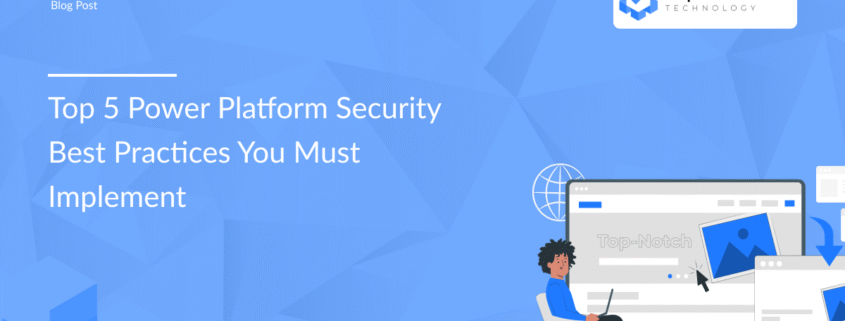Top 5 Power Platform Security Best Practices You Must Implement
Introduction
With the explosive growth of Microsoft Power Platform adoption, security is a critical concern for organizations. As business users increasingly build apps and workflows, it’s essential to protect your data, comply with regulations, and reduce risks. Power Platform provides a rich set of security features, but organizations must implement best practices proactively.
This blog covers the top five security best practices every company should adopt to secure their Power Platform environment effectively.
- Role-Based Access Control (RBAC)
Assigning the right permissions to users is foundational. Power Platform supports RBAC through Azure Active Directory (Azure AD), allowing administrators to grant only the permissions necessary for users’ roles.
- Use environment roles to control who can create, edit, or delete apps and flows.
- Limit connector access to prevent unauthorized data exposure.
Enforcing RBAC minimizes attack surfaces and accidental data leaks.
- Data Loss Prevention (DLP) Policies
DLP policies restrict which connectors can share data between business and non-business environments. For example, you may allow connections to internal SharePoint sites but block third-party social media connectors.
- Configure DLP policies in the Power Platform Admin Center.
- Regularly review and update policies as new connectors or services are introduced.
DLP policies are essential to keep sensitive data within approved boundaries.
- Use Azure AD Authentication and MFA
Power Platform leverages Azure AD for authentication, enabling integration with enterprise identity management.
- Enforce multi-factor authentication (MFA) for all users.
- Use conditional access policies to restrict access by location or device compliance.
This reduces the risk of compromised credentials and unauthorized access.
- Monitor Usage and Audit Logs
Continuous monitoring helps detect suspicious activities before they cause damage.
- Enable Power Platform audit logs via Microsoft 365 compliance center.
- Set up alerts for unusual activities like mass app deletions or connector changes.
- Analyze usage patterns to identify risky user behaviors.
Proactive auditing ensures timely incident response.
- Educate and Train Your Users
Security is a people problem as much as a technology problem.
- Train citizen developers on secure app design principles.
- Emphasize safe data handling and privacy compliance.
- Conduct phishing awareness and credential security training.
Informed users become the first line of defense.
How TopNotch Technology Can Help
Our specialized Power Platform Security Assessment services evaluate your current environment and recommend customized security improvements. We assist in policy configuration, user training, and ongoing security governance.
Conclusion
Microsoft Power Platform’s security features are robust but require intentional management. By implementing role-based access, data loss prevention, secure authentication, monitoring, and user education, you can confidently scale your Power Platform usage while safeguarding your organization.
Contact TopNotch Technology to secure your Power Platform investment today.
